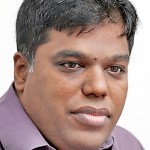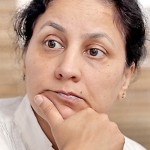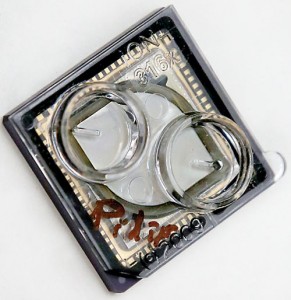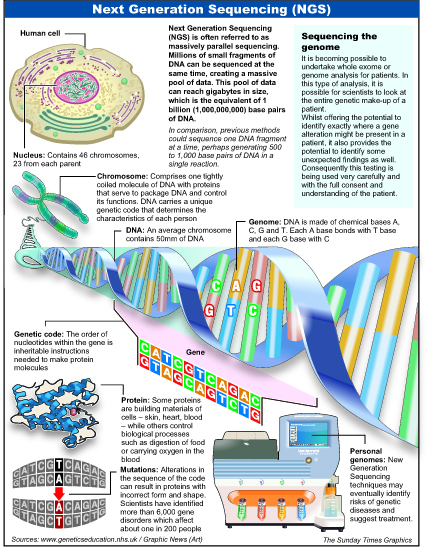News
All revealed in hi-tech gene test
Predicts cancer risks, enables detection of bacteria in blood, screens for inherited disorders
The large white building is like any other along Thimbirigasyaya Road, Colombo 5. But at No. 473, a small team along with sophisticated equipment on its mezzanine floor is set to take gene technology in Sri Lanka to a different level.

DNA analysis in the laboratory. Pix by M.A. Pushpa Kumara
It is at Credence Genomics that the very first case of Li Fraumeni Syndrome was detected in a 21-year-old three months ago, the Sunday Times learns, during a visit to its laboratory on Wednesday.
“We detected the TP53 gene associated with this rare genetic disorder that greatly increases the risk of developing several types of cancer,” says Joint Managing Director of Credence Genomics, Raj K. Omprasadham, explaining that while the young woman is being treated, her whole family has also been screened.
Although Credence Genomics has been in operation in Sri Lanka since 2011, mainly in research and development up to now, it is also to its

Jt MD Raj Omprasadham
unpretentious offices that a man arrived on a motorcycle, seeking help.
“He was desperate as his mother had been in hospital for as long as one year and they could not find what was making her very ill. We did the testing and picked out the specific bacteria that she was battling with. Medication targeting that bacteria ended her long stint in hospital,” adds Joint Managing Director Dr. Vaz S.S. Gnanam.
What does this company revolving round just 12 people, eight of whom are scientists have, that others do not?

Jt MD Dr. Vaz Gnanam
Cutting-edge technology in the new frontier of medicine that is gene technology, the Sunday Times learns. The company has made ‘Next Generation Sequencing (NGS)’ a commercial reality in Sri Lanka.
With the motto of ‘Beyond the boundaries of human science’, the company went public on Friday launching “Sri Lanka into ‘inner space’ – the merging of DNA & microchips”.
And what can your DNA tell you and how will it impact you and your loved ones? NGS, even new to the world, that Credence Genomics has brought to Sri Lanka will cover four main areas. They are:
Cancer – Predicting risk, diagnosing mutations and screening for inheritance patterns. Pre-disposition (predictive) cancer testing, simultaneous, for commonest 18 breast cancer predisposition genes including the markers BRCA1 and BRCA2. Sequencing of 17 genes to evaluate the pre-disposition for colorectal cancer.
Infections – Identifying all bacteria and fungi known to humans. Quicker and accurate bacterial profiling and fungal identification to address microbiological contaminations in clinical (including hospital-acquired infections) as well as industrial set-ups.

Anupama Gaur of Thermo Fisher Scientific based in India
Inherited disorders – Screening newborns within 48 hours for 853 inherited disorders, including 46 inborn errors of metabolism, using blood spots.
The carrier testing gene panel, meanwhile, is designed to evaluate the risk of passing a faulty copy of a gene to offspring covering 245 neuromuscular diseases, 159 heart diseases, 193 developmental diseases, 46 metabolic diseases and 210 other diseases including inherited cancers/blindness.
Personalised treatment — Finding the cancer hotspots and showing the way for the most effective treatment. This test is designed to study the genetic basis of a particular cancer in a person to aid the treatment regimen.
The ‘tale’ of Credence Genomics has been in three phases: Phase I – Establishing the platform of NGS and achieving optimal utilisation; Phase II – Personalised and predictive medicine; and Phase III – Bioinformatics.
Phase I is over and it is Phase II that they are into now to “change the everyday lives of millions of people at a very retail level in terms of access, reach, utility and scope”.

The ‘game-changing’ microchip with its nano-wells to which the DNA sample is loaded by a robotised arm. The signals are converted to a readable data file which is then analysed
Comparing the older methods of gene technology to pushing beads on an abacus in the early days of counting, Mr. Omprasadham says that currently globally NGS with its multiplexing is the latest. It is like computer calculations or simultaneous counting. “NGS is still new in the world but we have brought it to Sri Lanka.”
While Dr. Gnanam gives the disturbing statistic of 1 in 6 women in Sri Lanka having a predisposition for a malignant breast cancer, as opposed to 1 in 8 worldwide, Mr. Omprasadham cites the example of how earlier in breast cancer only a few markers or cell mutations could be identified at a time and even in that the results would be available only in three months.
“Now 18 markers can be tested for the same amount of money with the results available in a week. Not only are the results quicker and wider but they are also more accurate,” he points out.
The latest gene technology has impacted on treatment as well, according to Mr. Omprasadham. Usually when a person is having cancer, chemotherapy or radiation would be given like a “shot-gun” blast, hitting everything, with the hope that the cancer cells would also be hit. But such chemotherapy or radiation also leaves the patient very ill.
NGS, however, is able to determine what specific treatment would be suitable. This is personalised medicine and the ‘silver bullet’ that we have been waiting for, he says, adding that a simple blood test would be able to find what cells are mutating and a biopsy sample enable personalised treatment.
When asked whether Sri Lanka has targeted therapy, Dr. Gnanam says that the groundwork is being laid and those involved in the field of oncology are looking into this aspect. “The diagnosis for predictive medicine is initially being focused by us on breast cancer and colorectal cancer, as well as identifying the cancer hotspots for personalised medicine.”
Pointing out that Credence Genomics is hoping to introduce liquid biopsies without “cutting off a piece of a person’s body” for a solid biopsy, Dr. Gnanam says that with the technology that the company is hoping to introduce by the end of this year a drop of blood would be adequate to find not only cell mutations but also cancer hotspots.
“Improving the quality of life as well as giving the best quality of life by reducing pain and suffering is our objective,” he adds.

| Gene technology in a nutshell It is Dr. Michael Paumen who puts the complex subject of gene technology not only into perspective but also in a nutshell. He compares and contrasts this field to information technology (IT). Pointing out how the IT revolution has changed our lives, he talks of the impact of little computers and smart phones. If a person is lost in a new city, a map-app will help him find his way back to his hotel. Unimaginable 20 years ago, now there is e-mail and video-conferencing at the touch of a button. “The same thing is happening in bio-technology and it is equally important and life-changing,” he says.  Dr. Michael Paumen Dr. Paumen who is based in Singapore is the Senior Director, Medical Sciences, Asia Pacific and Japan, Thermo Fisher Scientific, Life Sciences Solutions Group, which has provided the sophisticated equipment to Credence Genomics. Thermo Fisher is headquartered in the United States of America. He picks out three areas where people have better options due to this revolution – cancer, infectious diseases and inherited diseases. Referring to the Human Genome Project, he explains how it helped the world learn a lot about genetic bases, thereby leading to more knowledge on which genes cause which disease. “We still don’t know everything, but there has been tremendous progress. This coupled with advances in technology is fuelling this revolution and the latest is New Generation Sequencing (NGS). The process, he tells the Sunday Times, has been the in-depth study of this field by academia followed by research and once the research has been tested and found to be robust, application in clinical and patient management. There has been an increase of knowledge of genes and also an increase in technology. “There has been tremendous progress in sequencing or decoding our genes and our genome. It is now being done faster, cheaper and better (more accurately). How fast it is being done is impressive. Ten years ago decoding a whole genome took about a year and cost a million dollars. Now it would take only about three days and cost over a little more than a thousand dollars,” he says, adding that costs are coming down. Next he deals with his speciality, genomic oncology, on which this technology has had a major impact. Taking up lung cancer, he says that earlier there were limited options. If detected too late, it would be a death sentence for the patient. Now, however, there is ‘personalised’ or ‘precision’ medicine and targeted therapy, where earlier there had been not much improvement in 30 years and survival rates were unsatisfactory. There is now more information on what drives those tumours and makes lung cancer progress. Over the last five years, half a dozen more genes that cause lung cancer have been identified and more drugs to attack them are being developed. This would give lung cancer patients a quality of life they have not had with ‘one size fits all’ chemotherapy and radiation, it is learnt. “Therefore, if you have lung cancer or any other cancer, there are more options,” says Dr. Paumen, reiterating that before NGS, one gene was tested at a time. Now a dozen are tested at the same time and patients do not have to have needles being sent frequently into the lungs for biopsies. “NGS allows the whole picture to be seen, for the NGS platform is entirely for patient management.” |

